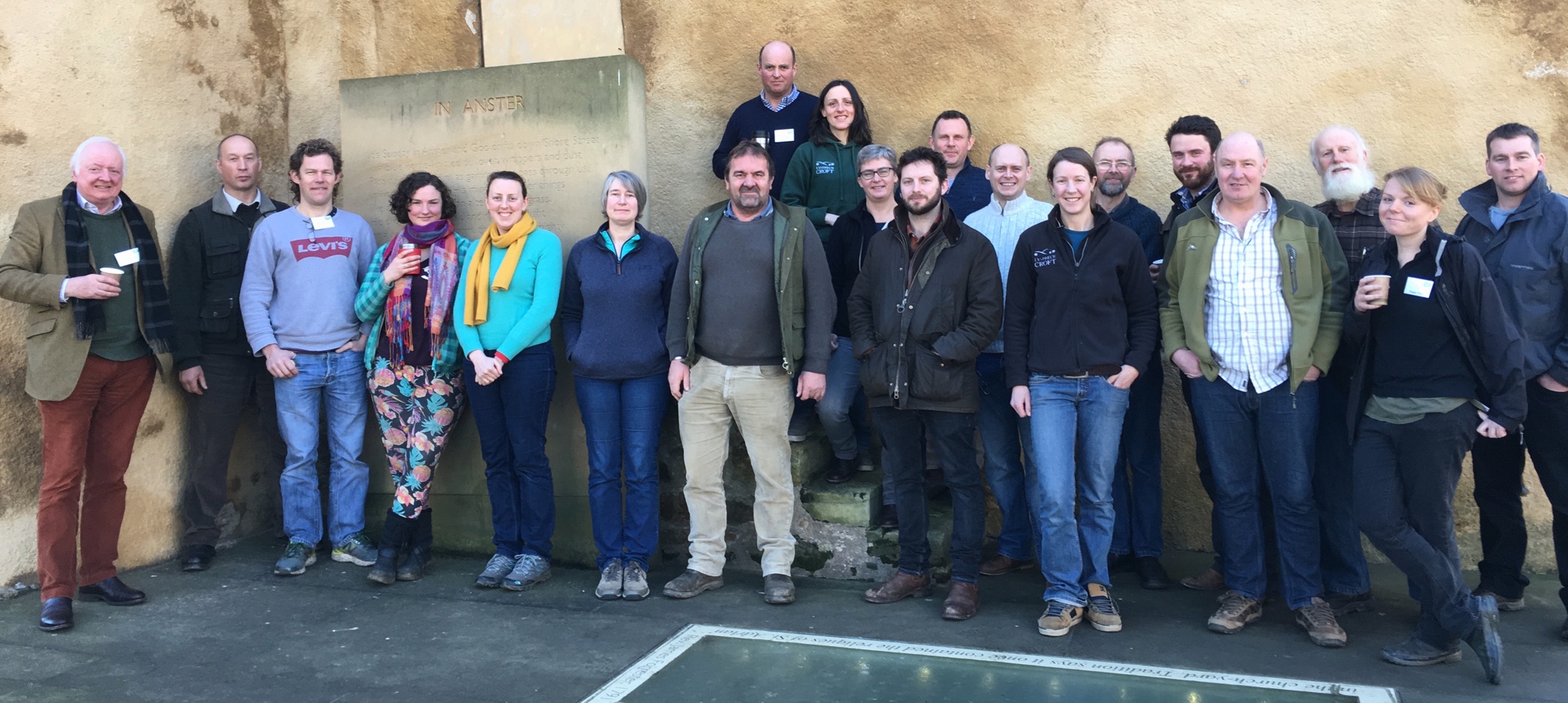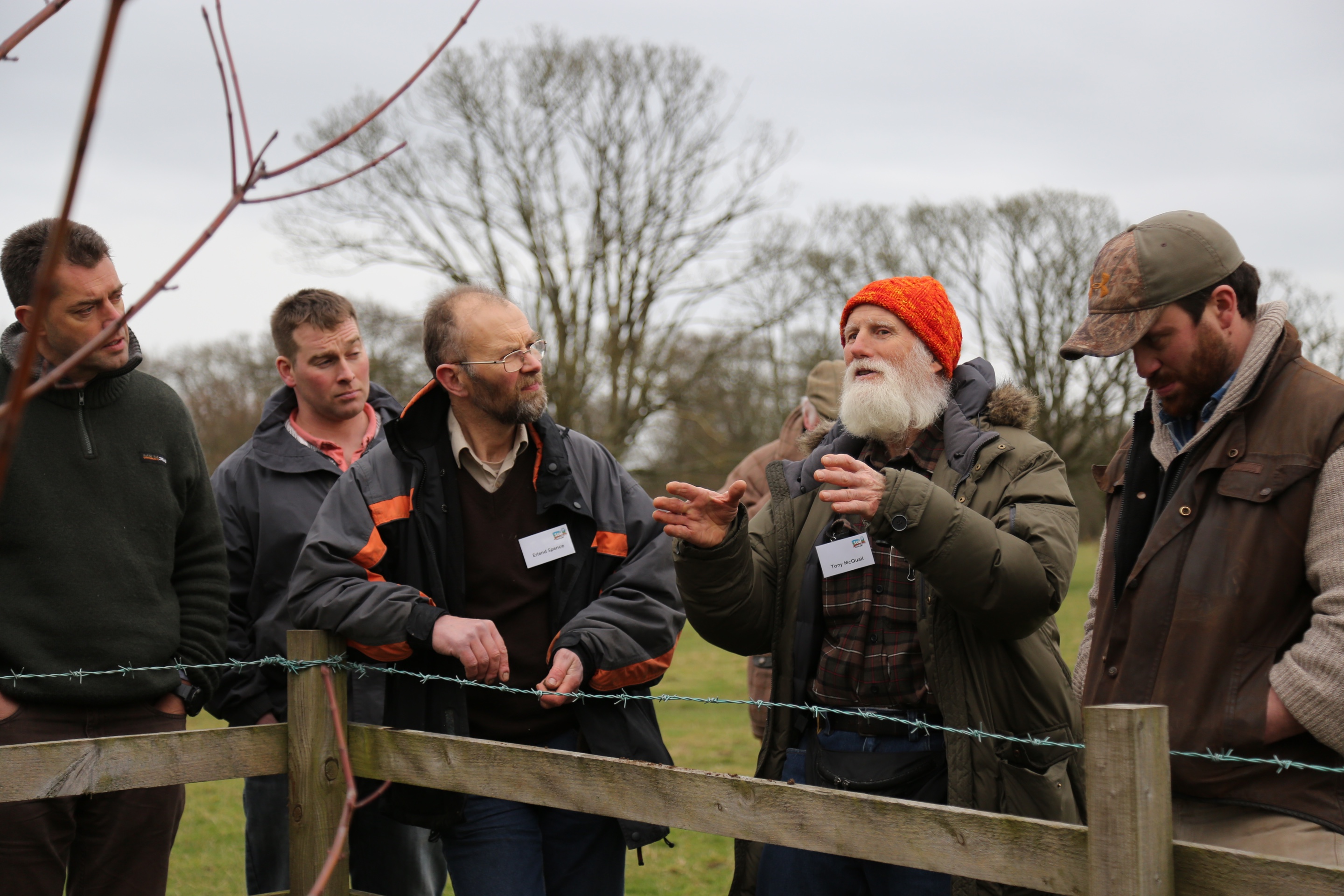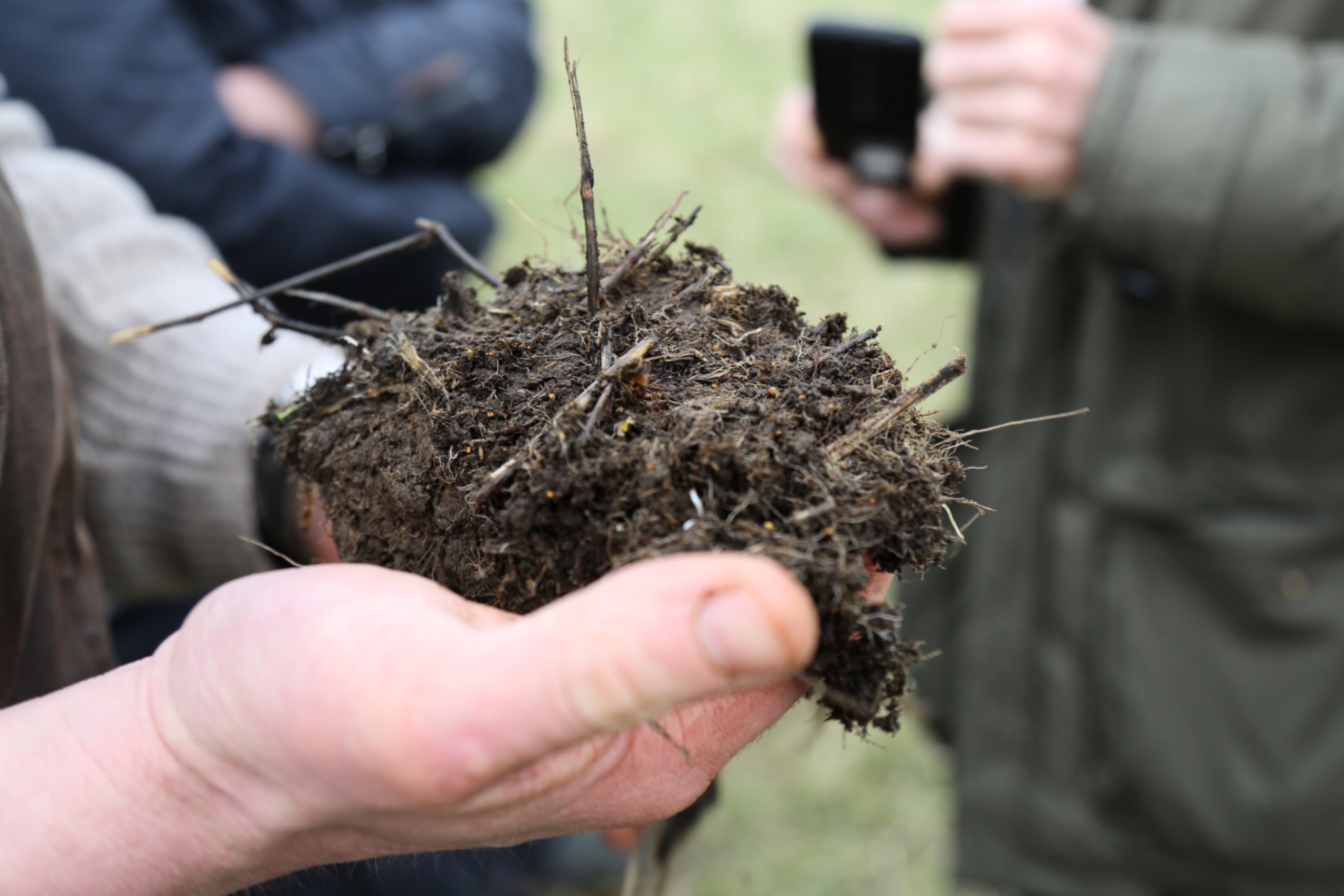
- Soil Association
- Our work in Scotland
- Scotland farming programmes
- Field Labs
- Mob Grazing Scotland
- Holistic Management

Holistic Management
Healthy Land, Healthy People, Healthy Profits
Forty people came together at Anstruther Town Hall in Fife, Scotland, on 12th February 2019 for a talk and discussion about Holistic Management with Canadian farmer and educator Tony McQuail.
Tony described how this ‘whole farm’ approach to management has made his business more productive and profitable, whilst helping his family feel that the farm is working for them, instead of the other way around.
Holistic Management principles include goal-setting, decision-making, planned grazing, infrastructure planning and soil monitoring.
You can watch a video of his talk below, or view his presentation here.
We also watched the short film Tall Grass Grazing.
Over the following three days, 20 farmers took part in Holistic Management training, over half of whom are involved in our Mob Grazing Scotland field lab.

Here are some key messages that came out of each day of the training:
Day 1 – Holistic Goal setting
If things aren’t working or there is a problem. We have three choices:
- DO NOTHING
- DO THE SAME HARDER
- MAKE A CHANGE
Tony advised us to make the best plan possible and assume it’s not going to work, then adjust as you go along. Making decisions together with your family/business partners/staff team helps to avoid blame when something doesn’t work out as planned.
The group worked on Quality of Life statements and Holistic Goals, recognising that ‘standard of living’ and ‘quality of life’ are not the same thing. Everyone recognised that better communication was key to a successful and sustainable farm business.

Day 2 – Grazing Management
The aim of a grazing management plan should be to have good quality forage and full rumens most of the time. Tony said: “In the first year of Holistic Planned Grazing you’re going to be unsure, there’s no perfect plan.” His advice was to increase herd density rather than rushing out and buying more livestock. In other words - keep the same number of animals in smaller paddocks, with a longer grass recovery time rather than increasing stocking rate.
We talked about the challenge of changing paradigms towards growing taller grass, and the value of farmers observing what comes naturally and letting grass “express itself” by setting seed. Here are some reasons you might let grass seed & leave lots of straw/rough stuff behind:
- Seeding naturally, using stock to spread seed, no re-seeds required!
- Trampling of biomass to kickstart biology and store carbon
- Create more thatch for winter grazing, prevent poaching
- Rougher stuff for cows about to calve, avoid them getting too fat
But Holistic Management is not just about “mob grazing’ or letting grass grow longer. The key message was: Keep stock in the right place, at the right time, for the right reasons.
A few other things to consider in planning your grazing:
- Every day you delay grazing in the Spring might give you three days later on
- Native grasses require less inputs than Italian rye grass
- Breed of animals – understanding what species/breeds work for you and your management
- The aim is to graze 40 % and leave 60% to avoid damaging root reserves. But there are times when you might want to severely graze or over rest.
- It’s very easy to overthink it, you’re dealing with a biological system and you can’t predict everything, just give it a go!

In the afternoon we visited the mob grazed field at Balcaskie and everyone was astounded by the amount of organic matter that had built up in just two years of changing the grazing system. Emily Grant from Coldrochie Farm commented on Twitter: “Hugely impressed with the dark organic matter building on the soil surface after only two seasons mob grazing. Clover seeds visible, with new grass and clover starting to germinate within that ‘dark matter’ too.
Day 3 – Financial Planning
We explored the three links in the chain of production:
- Resource conversion – ability to convert sunlight into raw resources
- Product conversion – ability to convert raw resources into marketable form
- Marketing – ability to sell the product at a decent price
Farmers tried to identify where the weakest link in the chain of production was within their enterprises. Another useful activity was to categorise variable to help business management into three areas:
1) Wealth generating costs – these are the things that are going to make you money – don’t be afraid to spend these, and spend more time on the activities associated with them (i.e. market development)
2) Maintenance costs – necessary for all enterprises to operate, but can be improved through technical efficiencies and/or new creative approaches (i.e. feed costs)
3) Inescapable costs – nothing you can do about them!
Take Aways
Everyone left with lots of questions, knowing it will take time and experimentation to find the answers, but boosted with enthusiasm that we can continue sharing ideas through the Mob Grazing Field Lab. There are lots of free resources to get you started available at Holistic Management International.
Lynn Cassells from Lynbreck Croft, Grantown on Spey said:"It was life changing to spend three days at the Holistic Management course facilitated by Soil Association Scotland. We have all been given a toolbox to take away to build social, economic and environmental resilience and profitability into our farm business. WE are the experts on our farms.”


Events
Interested in farmer-led innovation?
Find out more
